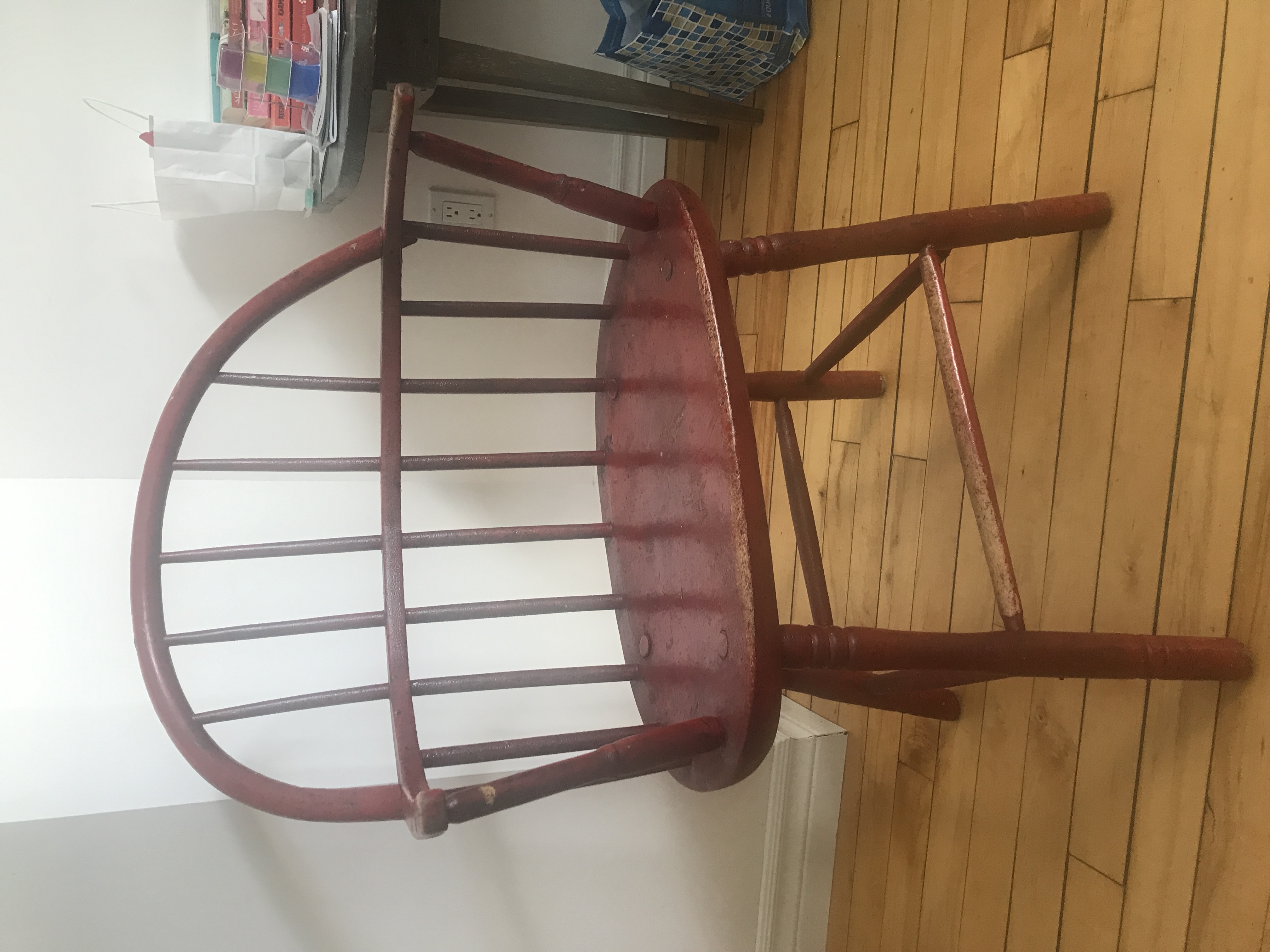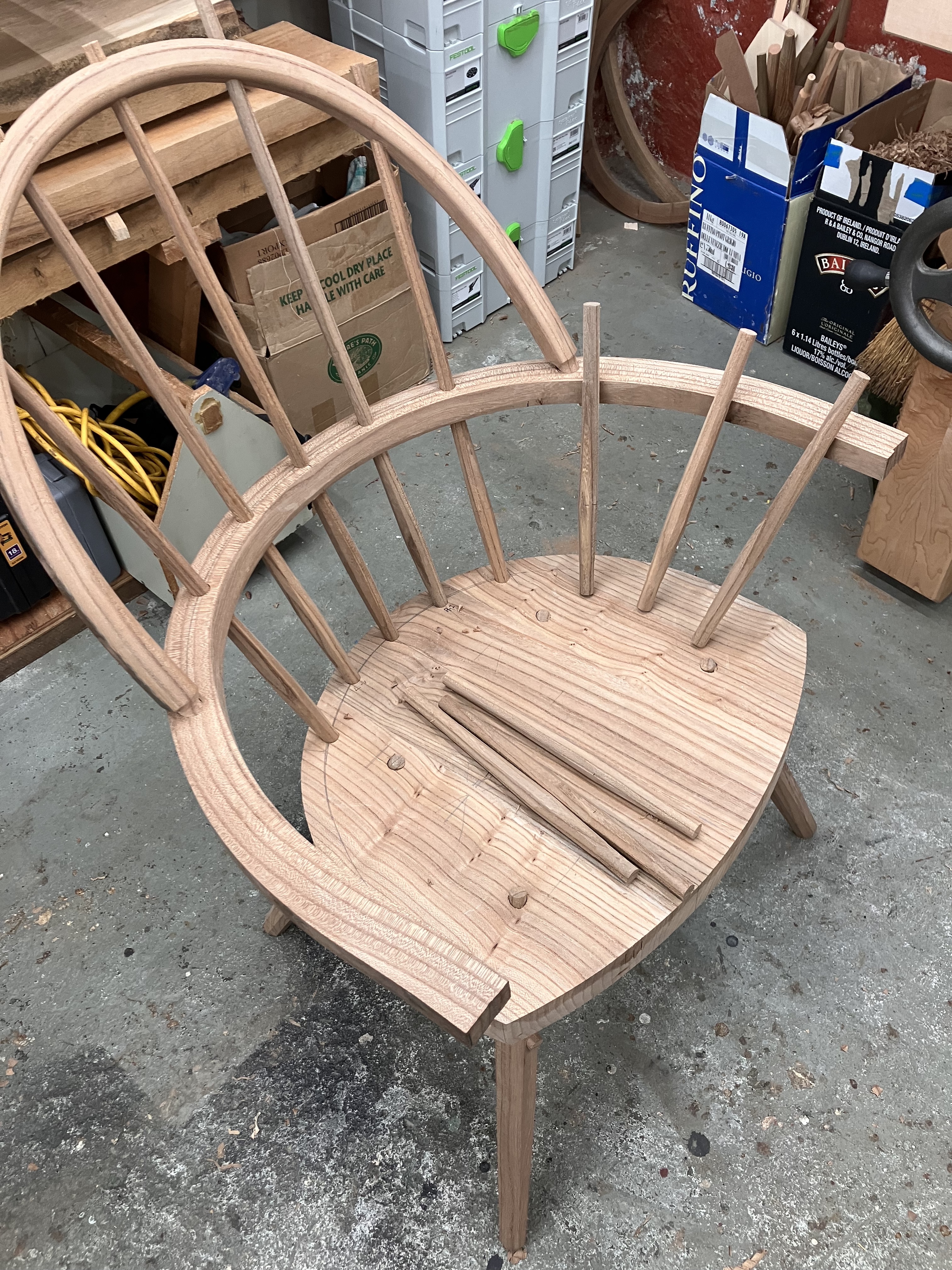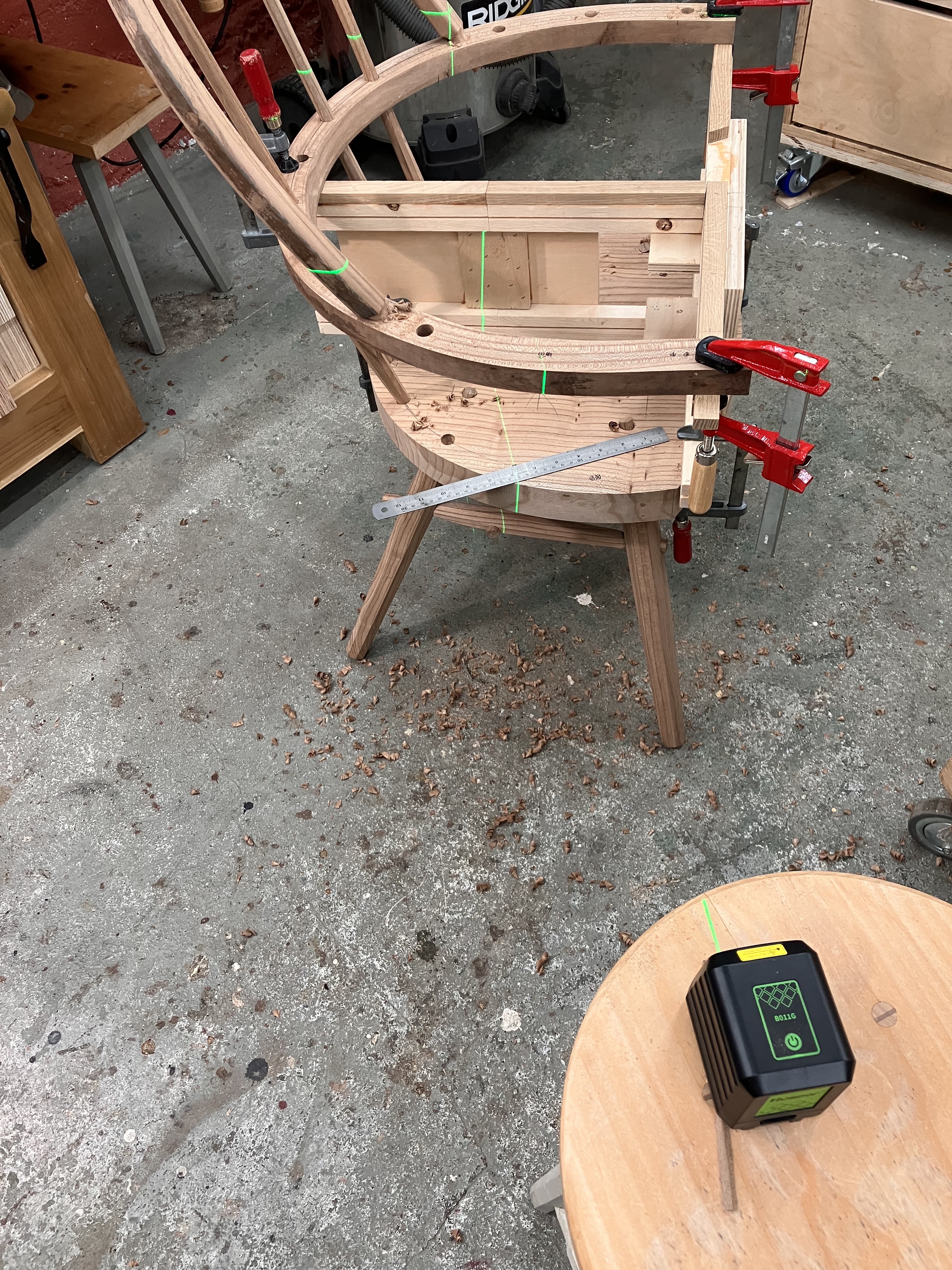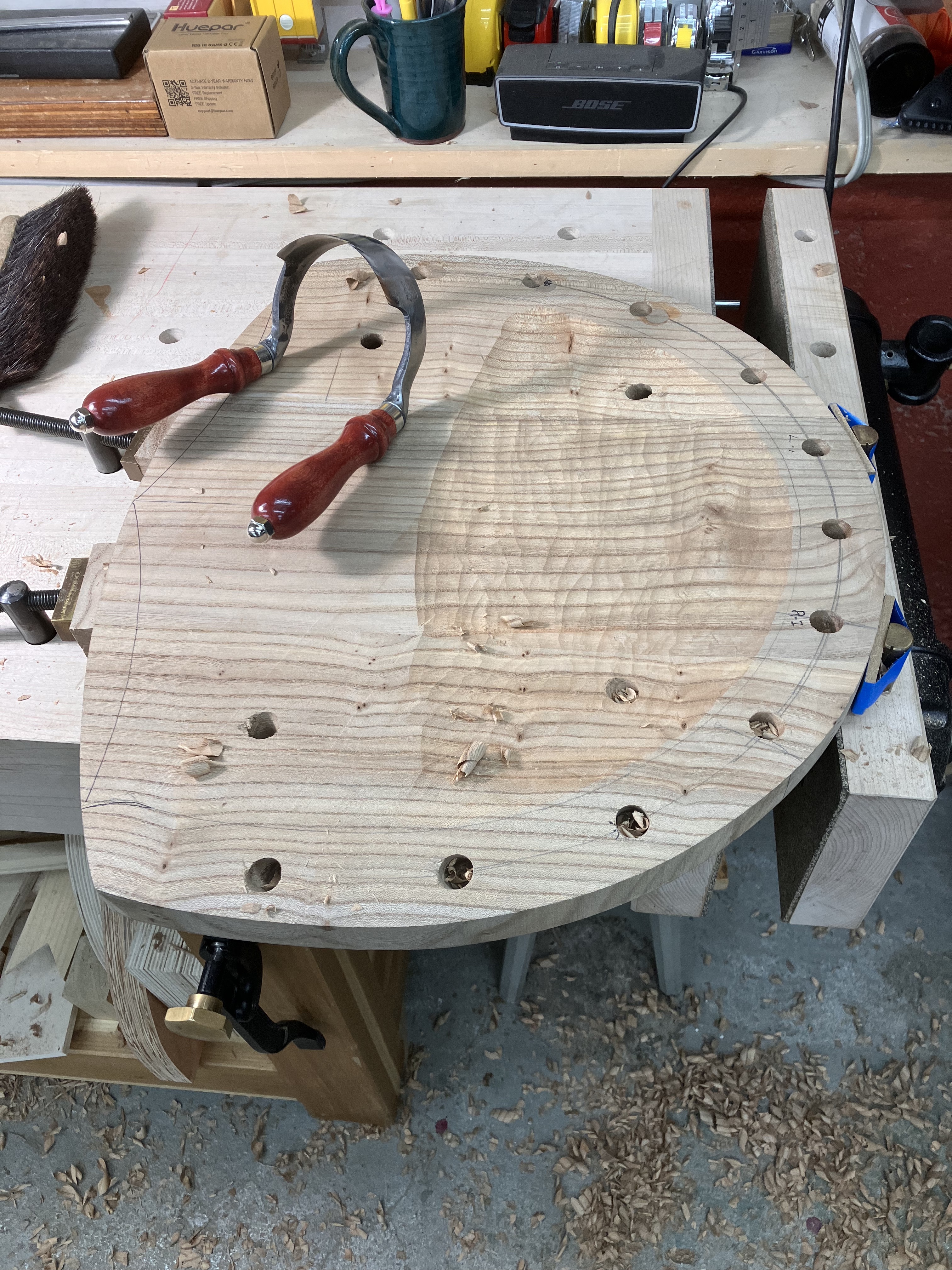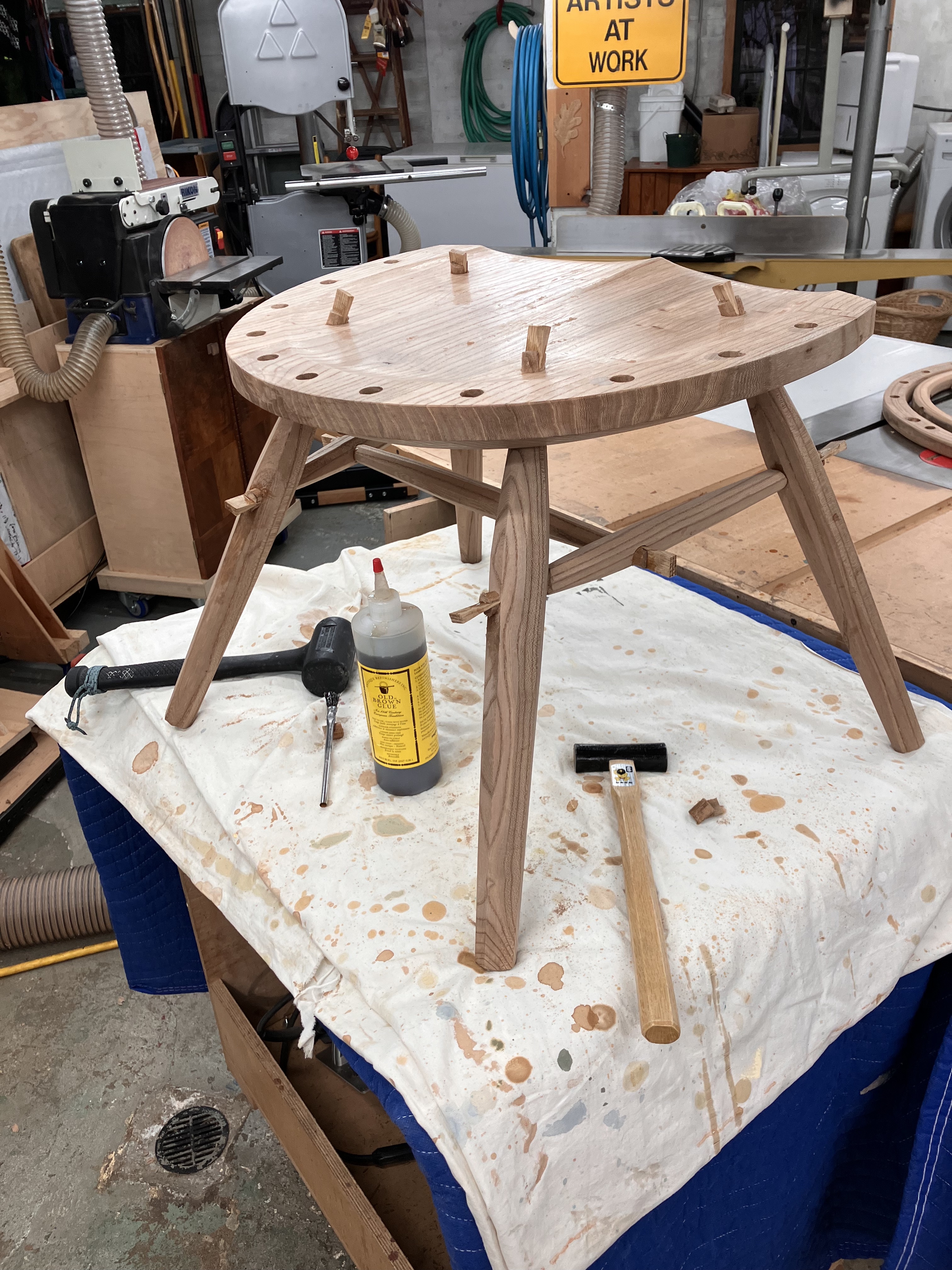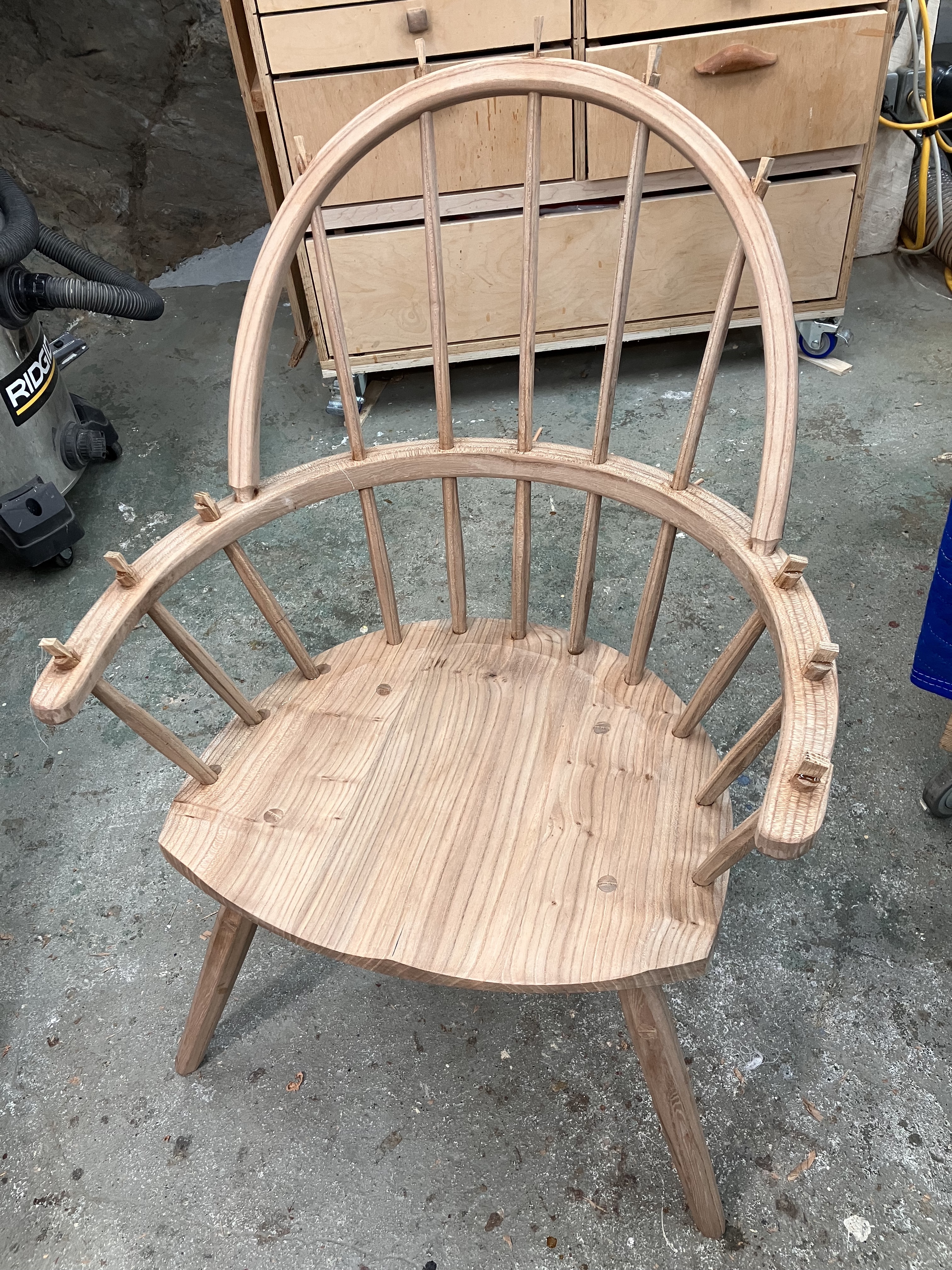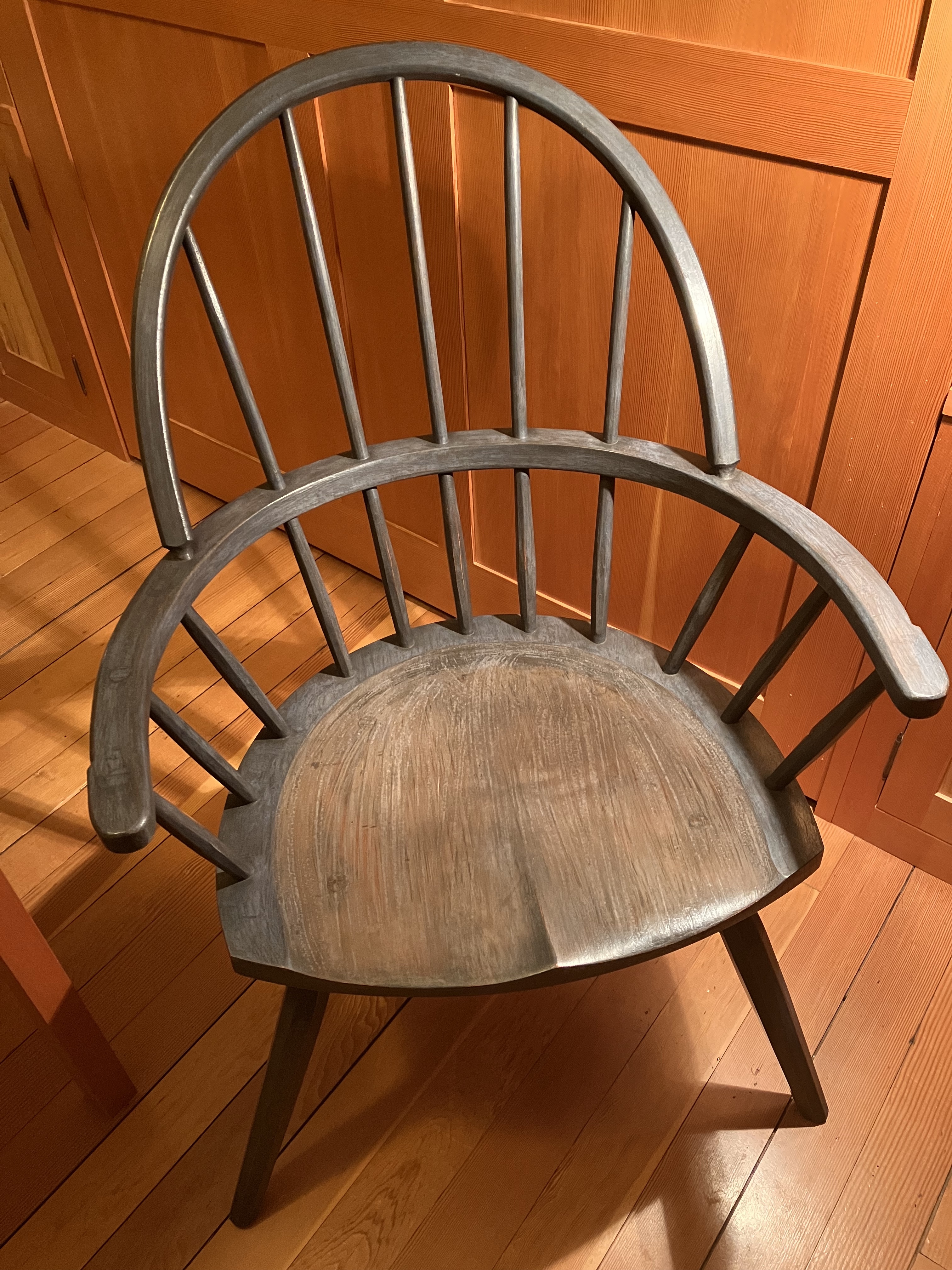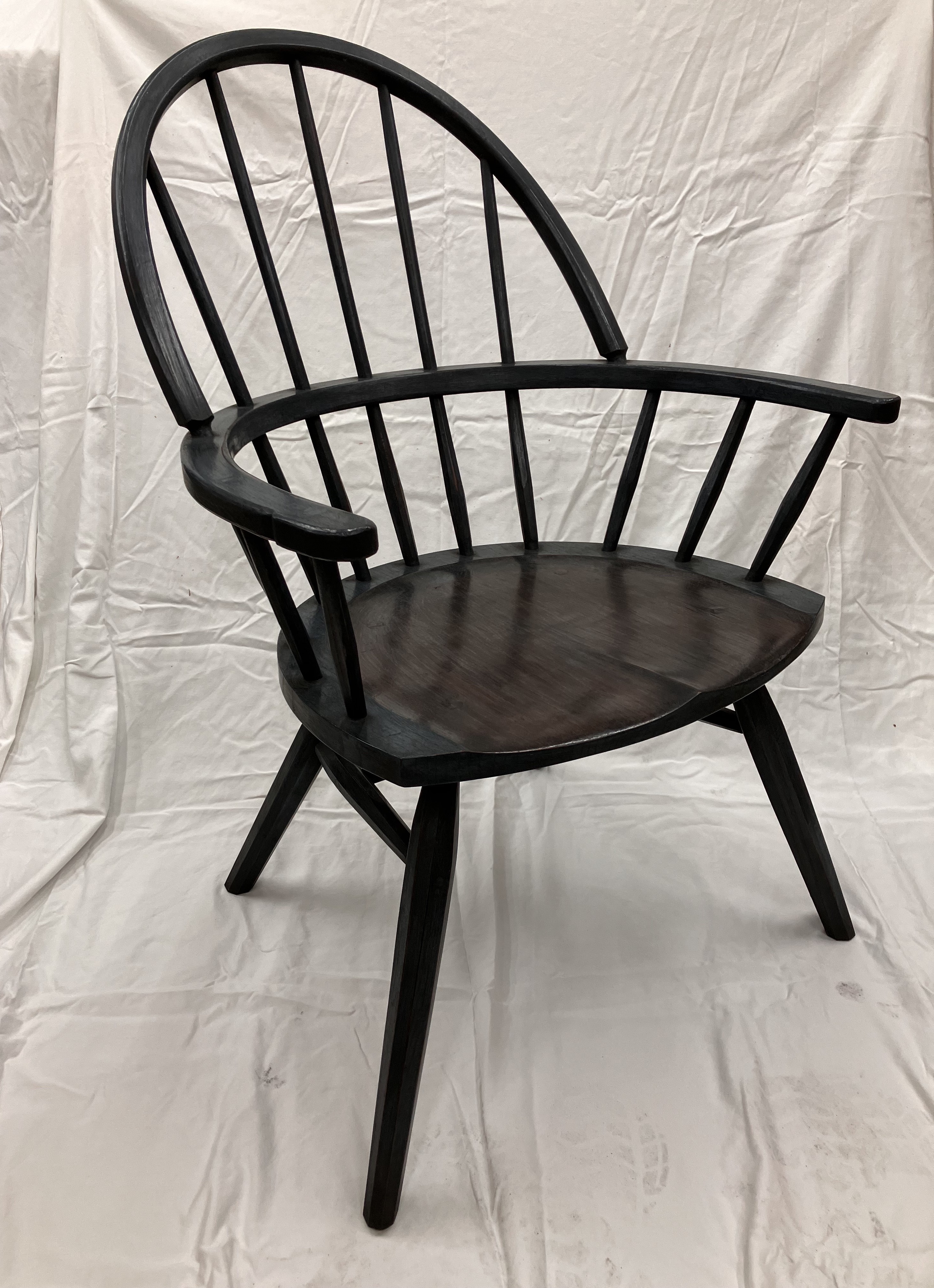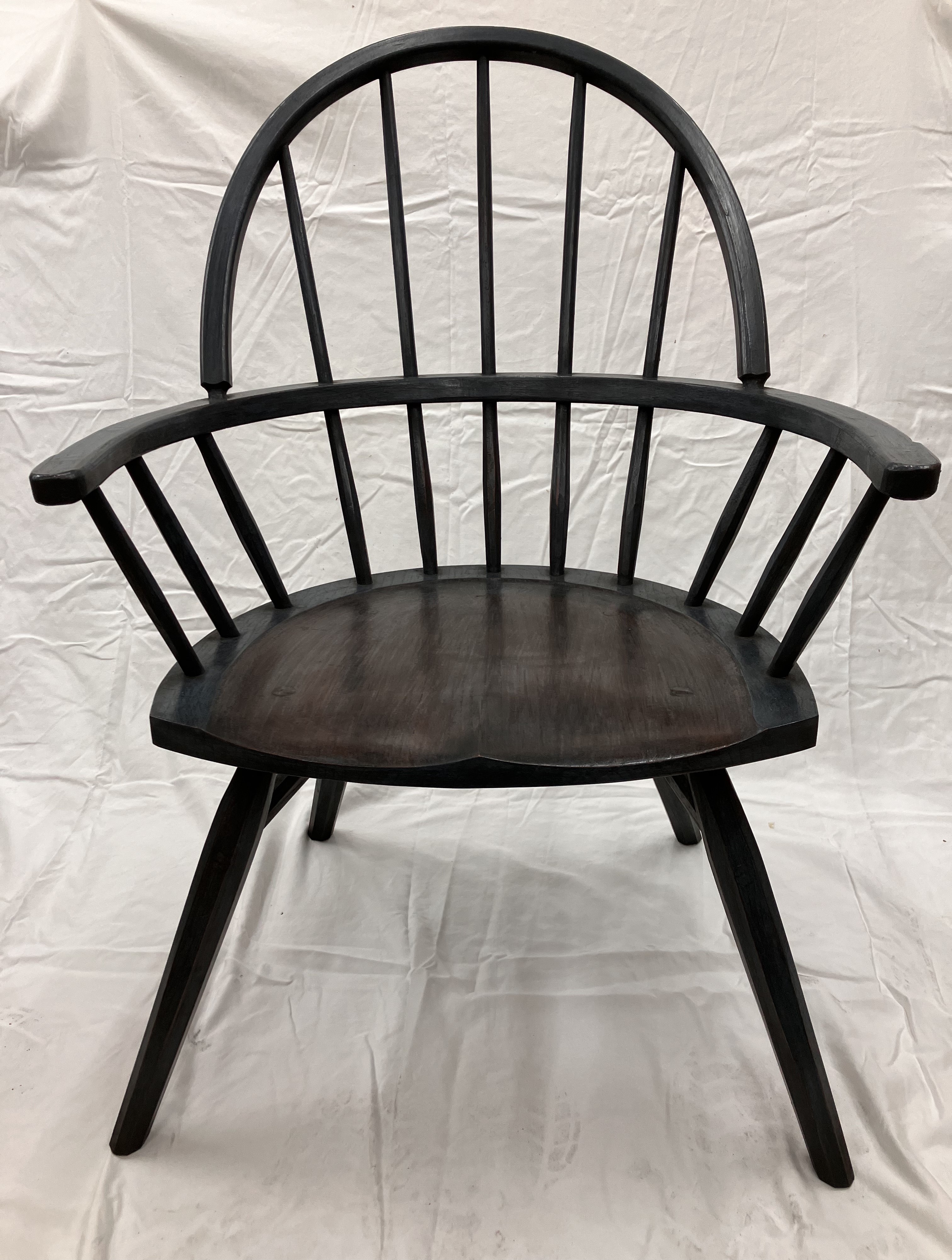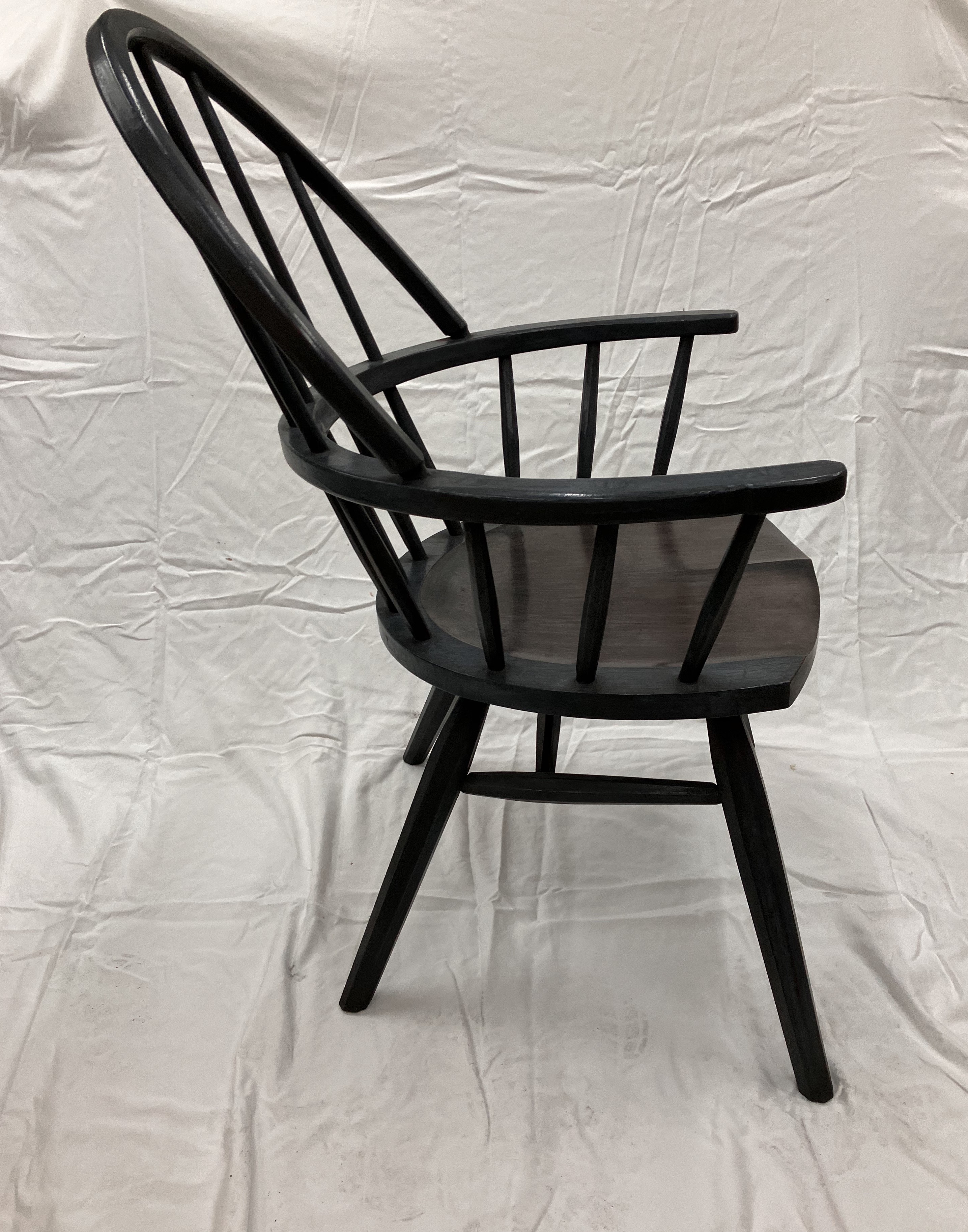Last July we visited with cousin Joan and her husband Gerry. They have a beautiful house in a small village just outside Toronto. The house has many treasures and my favourite by far was a red sackback chair from Prince Edward Island. Sackbacks have a bent arm bow and a hoop back. Pictures of that chair promptly went into my “chair inspirations” file. I also took notes on how the hoop back and arm bow went together.
Last November I pulled some beautiful straight elm from the wood pile and cut out the pieces that would become the arm bow and the hoop back. Those pieces soaked for a couple of weeks and in early December I steamed and bent them.
The seat and leg geometry are similar to the swedish-welsh chair that I made last year. Which is probably a weird design choice as most sackbacks have turned legs and windsor style seats. But I don’t have access to a lathe and I still like the facets and tapers on that swedish-welsh chair.
Overall I was pleased with how the parts took shape and how the chair came together. Though I did manage to mess up the angle of the side sticks. Each side looked great but two sides did not match. Seems that I got my measurements wrong. I picked the side that I liked best, patched the other side, and re-drilled the mortises. And to make sure I got it right the second time I pulled out the laser and used it to line the holes up perfectly. I knew all along that this chair would be painted so the patches were only damaging to my ego.
Once all the holes were in the right places I saddled the seat. Saddling was fun and it went well though it was a lot of work.
And thankfully the glue-up went smoothly. I used hide glue again. It takes longer to set up, so there’s more time for making sure that all the pieces are in order.
For finishing the chair I took inspiratation and some instruction from John Porritt’s book “The Belligerent Finisher.” Porritt makes chairs that look old. This is not about fraud and fakery. Rather it’s about making new objects that feel comfortable and lived-with. I was facinated by the idea and by his writing. I balked at his recommendations for using nitric acid and flame to work that magic but following his advice I spent a lot of time burnishing surfaces with a chain-mail pot-scrubber and removing almost as much pigment as I applied.
The result is a chair that already looks like it might have some stories to tell. There’s definitely room for more practice and learning but the results are facinating. I think I might have another try at belligerent finishing.
Elm from the VIWG wood rescue program, aniline dye, milk paint, black linseed oil wax, belligerence
